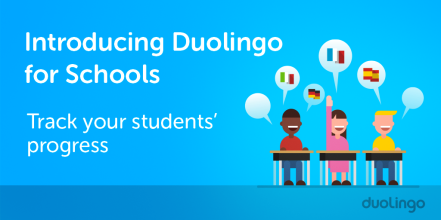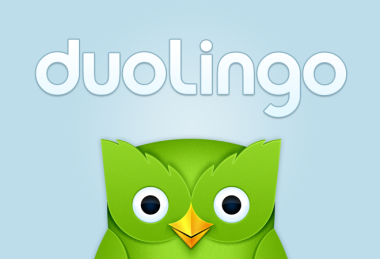Welcome to this week’s blog post. This week, we will talk about the DuoLingo app.
- You can use it directly on the website.
- You can find it on the app store.
- You can also find it for Android.
This app was the 2013 iPhone app of the year. I personally discovered that app for my own language learning. I had just got back from a Spanish immersion in Spain and I wanted to keep practicing what I had learned. I still use the app and I really enjoy it.
For those of you who have never heard of DuoLingo, it is language-learning service. For example, if you speak English, you can learn Spanish, French, German, Italian, Portuguese, Dutch, Irish, Danish, Swedish, Turkish, Hungarian, Esperanto, Ukrainian, Russian, Romanian and finally, Polish (that is a lot of languages to learn!!!). However, for a French speaker there is not as much choice: English, Spanish and Italian. According to The Independent, a British newspaper, each day 100,000 new users start using DuoLingo.
To start using the app, you can create a free account. You can also sign in via Facebook or Twitter. Once you are in, you can choose which language you want to learn. You can also choose to do a placement test that allows you to skip the first beginner levels. The app is really easy to use, colourful and fun. Each level has a topic (food, animal, present, pronouns, etc.) and has more or less 3 lessons. With this app, you can improve your reading, writing, listening and speaking skills. The level of difficulty increases gradually after each exercise. It starts with basic knowledge, different vocabulary topics and goes on into verb tenses and harder concepts. The exercises consist of multiple-choice questions, listen-and-write exercises, translation exercises and spoken exercises. One important thing in learning a new language is repetition, and on DuoLingo, you can go back and do old exercises as many times as you wish. The app does not really explain grammar, it will focus more on associating a picture with a new word to help you remember it. One of the creator of DuoLingo, Luis von Ahn, mentioned to The Independent that at the end of the learning process, learners are a B2 level, which correspond to an upper intermediate level. On your DuoLingo account, you have access to the list of vocabulary that you have learned. Throughout the game, you also collect lingos, which you can use to buy different power-ups, outfits for the little owl and bonus skills. Also, the PC Magazine emphasizes a lot the DuoLingo app intelligent crowd-sourcing. Users of the app can translate texts as practice for them. You can translate directly from a language to another or do proofreading of other users’ work. Some translations are actually published on the Internet. I think that this is real knowledge sharing on the Internet, even though DuoLingo is making a lot of money out of it. However, this is probably why the app is still free.
The Fluent in three months blog has done a review of DuoLingo and has summarized it this way:

This app is not only interesting for the general public who wants to learn another language for traveling or working purposes, but also for teachers and their students. The DuoLingo app has made it easier for teachers to follow their students’ progress. Students with mobile devices can download the app and the others can go directly on the website. Everyone has access to it. DuoLingo is a great app for teachers. It it a really good interactive tool that allows students to practice and learn new vocabulary. It might motivate some curious students to start learning another language and hard worker students might want to push their learning further than what is asked by the teacher. It can help teachers keep tract of the students’ difficulties and work. Parents can also look at their child’s progress. Finally, it is free. For schools with a tight budget, it is a good tool. Students can set themselves daily goals and compete with their friends. They can invite them through Facebook or email.
DuoLingo has also another project: DuoLingo Test Center. They created an English proficiency test. The Tech Crunch website explains it more in detail. The DuoLingo team wants to compete with other well known tests, such as the TOEFL. Their test can be done at home, which makes you save a lot of money. You do not have to drive many hours to get somewhere where they administer the test, you can actually do it at home. The camera and microphone of your computer or iPhone record everything you do. A DuoLingo proctor then watches the video to make sure that the person did not cheat.
You can learn more about DuoLingo in this TED Talk:
Thank you for reading this post.
I will see you next week with another one.

